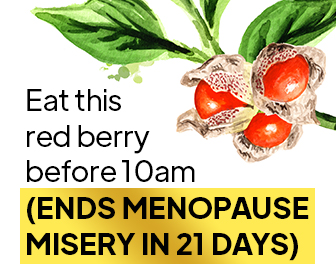Many of us experience food intolerance at one time or another in our lives. Sometimes a food intolerance lasts only for a period of time, but for others, it may become a more permanent issue.
Food intolerance (or food sensitivity) is much different from a food allergy. Food allergies often cause serious issues, including hives, throat swelling, and death. Instead, a food sensitivity is non-life-threatening. Non-allergic food hypersensitivity and food intolerance only require us to limit our intake of certain foods.
Here, we’ll define what a food intolerance is, and list out the nine most common food intolerances people suffer from and their respective symptoms. We’ll also help you determine if you may have a food sensitivity, and the food intolerance tests you can take find out for sure.
Food Intolerance Definition: What is it?

If you want to know if you have a food intolerance, it’s important to first learn what it is exactly. The following food intolerance definition is a good starting point.
A food intolerance is caused by the lack of an enzyme that our bodies need to digest certain foods.[1] A healthy system can accommodate the food we eat, break it down, process it and eliminate the waste. However, a person with a food sensitivity lacks a specific enzyme or chemical to process specific foods or elements normally. This results in various symptoms and is known as intolerance. Some food intolerance symptoms include:[2]
- Abdominal pain
- Stomach cramps
- Bloating
- Gas
- Diarrhea
- Heartburn
- Headaches
- Nasal congestion
The real issue is that a food intolerance can have serious effects over time. The continued intake of sensitive food or elements can cause local inflammation. Consequently, this inflammation can spread to other cells and tissues. This can cause chronic conditions such as psoriasis, IBS, painful migraines, ADHD, sinusitis, heart problems, diabetes, and arthritis.[3]
Differences between food intolerance vs. food allergy

Whilst food intolerance is your body’s reaction to an inability to digest certain foods, food allergies are very different – and more dangerous. A food allergy is an immune system response to food elements that are, otherwise, harmless to others.
When the body thinks a particular food is harmful, the immune system produces antibodies to fight off the allergen. It releases defensive chemicals, causing serious inflammation. On the contrary, food intolerance doesn’t involve the immune system. It is simply the body’s way of telling you it can’t digest a particular type of food.
Here are the main differences between food intolerances and food allergies:
- A food allergy is the body’s immune response to an offending allergen, whereas food intolerance doesn’t involve the immune system.
- Whilst food intolerances may cause severe discomfort, they are generally not life-threatening. Conversely, food allergies can actually be life-threatening and cause death.
- Food allergy symptoms occur very soon after coming into contact with the specific food element.[4] In contrast, food intolerance symptoms can surface only hours after ingestion.
In serious cases, food allergies can cause anaphylactic shock and even death. It’s important to recognize the symptoms and seek medical help if you think you may have a food allergy. Symptoms include:[5]
- Swelling of the lips and throat
- Nausea, diarrhea, vomiting
- Low blood pressure, dizziness, faintness
- Hives, rash, itching
- Dry, itchy throat and tongue
- Coughing, wheezing, difficulty breathing
10 Most Common Food Intolerances and What to Do About Them
All of us know at least one person who suffers from a food sensitivity. The list below captures the nine most common food intolerances, as well as how to recognize and relieve them.
1) Lactose and dairy

Lactose intolerance is a common food sensitivity. It is so mainstream that supermarkets now sell a wide variety of lactose-free dairy products. According to the statistics, 75% of the world’s population and 25% of the population in the United States are lactose-intolerant![6]
Lactose is a sugar found in breast milk and cow’s milk.[7] When we are infants, our bodies usually produce the lactase enzyme in our small intestine. This lactase enzyme breaks down the lactose sugar in milk. However, once we reach an age where we start eating solid foods, some of us stop producing that lactase enzyme and are no longer able to digest milk or dairy products.
Signs and symptoms
These symptoms can appear anytime between ½ hour and 2 hours after consumption.[8]
- Gas
- Bloating
- Nausea
- Diarrhea
- Abdominal cramps
Common foods with lactose you should avoid
- Milk
- Yogurt
- Cheese
- Cream
- Butter
- Ice Cream
Tips for managing lactose intolerance
- Eat a healthy amount of calcium. You’ll need to find alternative sources of calcium if you suffer from lactose intolerance. You can get calcium in foods like broccoli, canned salmon, soy milk, rice milk, spinach, and pinto beans.
- Get enough vitamin D. This vitamin is usually added to milk or dairy products. Even though you can’t have milk and dairy in your diet, you can get your dose of vitamin D from other sources. Eggs, liver, or a vitamin supplement can be good options. Do consult your health professional to determine what is best for you.
- Take probiotics. If you ingested dairy products, take a probiotic supplement with live active probiotic cultures to reduce bloating, gas and diarrhea.
- Get tested. Visit your doctor to ask for a professional diagnosis. Your doctor might conduct a lactose test, hydrogen breath test, and or stool acidity test, to try and diagnose your intolerance.[9]
Eating dairy-free doesn’t need to be boring! Check out our easy to make recipe for dairy-free brownies if you want to try your hand at making some delicious dairy-free food.
2) Gluten

In the past two decades, more and more people have been diagnosed with gluten intolerance or sensitivity. Now, it is a clinically recognized disorder: non-celiac gluten sensitivity or NCGS. The symptoms of NCGS are quite similar to those of celiac disease. However, as it does not produce noticeable physical responses, it’s usually challenging to diagnose.
NCGS is marked by the body’s immune response to wheat and gluten. Specifically, it is the innate immunity marker that increases with NCGS.[10] This means that NCGS increases the body’s primary defense system to protect it against sickness. But it does this in response to gluten when no negative virus or infection is happening. The body’s response to gluten sensitivity causes internal inflammation until the gluten is processed through the GI system.[11]
Consulting with a healthcare professional will help determine if you have NCGS, and help you figure out the best ways to manage your condition. Doing so will also point you in the right direction to start a gluten free diet.
Signs and symptoms
- Bloating
- Gas
- Abdominal pain
- Diarrhea
- Constipation
- Nausea
- Headache
- Joint pain
- Numbness in arms, legs, or fingers[12]
Common foods with gluten you should avoid
- Beer
- Bran
- Chicken patties
- Couscous
- Orzo
- Semolina
- Soy sauce
- Veggie burgers
Tips for managing gluten intolerance
- Always read food labels. If you have NCGS, a gluten-free diet is your best option. Make sure you look for “low-gluten” (maximum 20ppm of gluten) or “gluten-free” (maximum 10ppm of gluten) options.[13] Also, do be aware that most food items have some contact with wheat or gluten, so reading food labels is still the best way to prevent accidental ingestion.
- Eat foods that are inherently gluten-free. Apart from fresh fruits and vegetables, there is a world of grains that doesn’t contain gluten. Gluten-free grains/grain-products include amaranth, corn, buckwheat, coconut flour, millet, potatoes, quinoa, soy flour etc. Most of these grains and flours are also commercially available.
Ready to start cooking up a gluten-free storm? Start simple with this hearty, but healthy gluten-free bone broth recipe.
3) Nightshades

Nightshades are plants belonging to the family “Solanaceae”, and consists of both edible and toxic varieties of fruits and vegetables. Common edible nightshades include tomatoes, peppers, potatoes, and eggplant.[14] Because these vegetables are so common in our diets, an intolerance test for nightshade sensitivity often occurs immediately after testing for lactose and gluten-sensitivities.
Nightshades contain a group of toxic chemical compounds called glycoalkaloids, which protect the vegetable from mold and pests.[15] Although most people have no ill reactions to these alkaloids, there are some who do. The inflammatory effects of nightshades are usually on the GI tract, the bones, and the joints. Thus, it can affect and worsen irritable bowel syndrome, arthritis, and osteoporosis [16], [17], [18]
Signs and symptoms
- Heartburn
- Nausea
- Diarrhea
- Gas[19]
Common nightshade foods you should avoid
- Tomatoes
- Bell peppers
- White potatoes
- Eggplant
- Chilis
- Goji berries
- Tobacco
- Ketchup
- Hot sauce
- Paprika
- Cayenne pepper
Tips for managing nightshade food intolerance
- Instead of potatoes, try using cauliflower or sweet potatoes.
- Consider beets, grapefruit or jicama to replace tomatoes in recipes.
- Swap eggplants for mushrooms.
- For alternatives to hot sauce or paprika, try black pepper, cumin, or curry powder.
4) Sugar
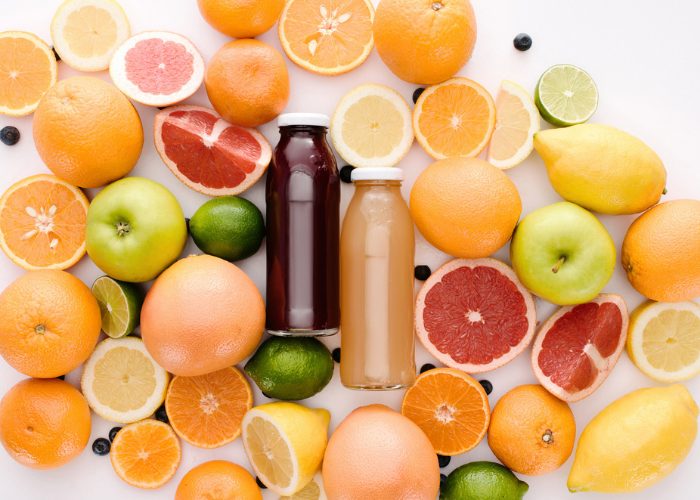
According to the Food Intolerance Institute of Australia, 1 in 3 people suffer from sugar intolerance.[20] Sugar intolerance is caused by an impaired ability to digest sugars, which causes an overgrowth of intestinal bacteria.[21] An overload of sugar also impairs our body’s self-repair function, thus making it unable to fight off bacteria. All of this makes our bodies a great breeding ground for bad bacteria. [22] This could lead to other conditions, including yeast infections and diabetes.
Sugar sensitivity applies to both complex carbohydrates and simple sugars. Complex carbohydrates come from grains and potatoes, and simple sugars can be found in basic fruits and vegetables.[23] When your body has difficulty digesting these sugars, you may experience one or more uncomfortable symptoms. Luckily, sugar intolerance can be easily treated by eliminating high-sugar foods from your shopping list.
Signs and symptoms
- Abdominal pain
- Bloating
- Borborygmi (gurgling noise in the intestines)
- Flatulence
- Nausea
- Diarrhea
- Fatigue[24]
Common foods with sugar you should avoid
- Canned fruits
- Juices
- Applesauce, dried fruits
- High fructose corn syrup
- Tomatoes
- Asparagus
- Artichokes
- Garlic
- Onion
- Wheat
Tips for managing sugar intolerance
- Elimination. Sugar sensitivity or sugar intolerance can be treated by eliminating entire types of foods from your shopping list.
- Stay away from processed foods. High fructose corn syrup is a major enemy for those with a sugar intolerance. It can be found in most processed foods, from tomato sauce to soup. So generally, if you can stay away from processed foods, do so!
- Choose sweeteners carefully. Agave, honey, barley malt, rice syrup, or natural fruit sweeteners are options in a sugar intolerant diet.
- Take probiotics. Take a daily probiotic supplement to keep your gut bacteria at a healthy level and to prevent overgrowth of candida.
5) Eggs

Egg intolerance occurs when you come into contact with egg proteins. Immune system cells (or antibodies) recognize these proteins and respond atypically. The cells signal the immune system to release histamine and other chemicals that cause allergic signs and symptoms.[25] Science does not differentiate between an egg sensitivity, egg intolerance or an egg allergy. It also notes that egg allergies occur only in rare and extreme cases. In those rare cases, an egg sensitivity can result in anaphylaxis.[26]
Interestingly, egg intolerance occurs mostly in young children and affects 1 in 20 children. However, 80% of those children outgrow the intolerance before adolescence.[27] Furthermore, food sensitivity to eggs is more often related to the egg white than the yolk.[28] Apart from egg proteins in food, some common vaccines also contain egg proteins.[29]
Signs and symptoms
- Abdominal issues
- Wheezing
- Coughing
- Nasal congestion.[30]
Common foods with egg you should avoid
- Bread
- Cake
- Ice cream
- Mayonnaise
- Quiche
- Pastries and desserts
- Battered foods
- Egg pasta
Tips for managing egg intolerance
- Avoidance. Avoiding egg and egg products is the primary way to treat an egg intolerance.[31]
- Have antihistamines at the ready. Antihistamines may be taken in case eggs were accidentally consumed and allergy-like symptoms appear (sinus issues or itchy skin).[32]
- Look for alternatives. There are egg-free breads, noodles, cakes, and desserts available in stores. Additionally, you can search for vegan food options that will not contain eggs (e.g. vegan mayonnaise and ice cream).
6) Rice

Rice is a growing food sensitivity that currently affects 10% of Asians. It is also becoming more common in the United States and Europe.[33] Children with wheat allergies are often also sensitive to rice.[34] Rice is found in many different foods including granola bars, rice milk, rice cakes, and rice noodles.
Signs and symptoms
- Hives
- Itchy skin
- Asthma and respiratory issues
- Gastrointestinal disorder[35]
Common foods with rice you should avoid
- Sake (rice wine)
- Rice vinegar
- Sushi
- Rice milk
- Spring roll wrappers
- Rice noodles
- Rice crackers
- All varieties of rice grains (e.g. long grain, short grain, basmati, jasmine, wild rice, Arborio, brown rice etc.)
Tips for managing rice intolerance
- Avoid and replace. The first step to managing your intolerance is, of course, to avoid rice. Find alternatives to replace it in your favorite recipes. Using vegetables to make dough and noodles is very popular. There are also recipes for cauliflower rice, zucchini noodles, coconut pizza crust, collard or lettuce wraps, and plantain chips. You can also use quinoa, barley, or millet to use in recipes where rice is used as a side dish.
Once you get into the habit of swapping rice for alternative carbs, you’ll see it’s not as challenging as it first seems. For example, instead of pairing this delicious chickpea curry recipe with rice, just use quinoa instead.
7) Corn

Food intolerance to corn can seem similar to sugar intolerance. This is because corn is the base of high fructose corn syrup, and in this form, it is also a simple sugar. However, food sensitivity to corn also includes every other form of corn, including fresh, canned or frozen corn, corn meal, corn starch, corn oil etc.[36]
Signs & Symptoms
- Nausea
- Stomach cramps
- Indigestion
- Vomiting
- Diarrhea
- Nasal congestion
- Sneezing
- Headaches
- Asthma[37]
Common foods with corn you should avoid
- Canned corn
- Corn oil
- Corn syrup
- Frozen corn
- Corn starch
- Corn fillers
Tips for managing corn intolerance
- Check food labels. Corn is commonly used as a meat filler for fast foods, including both hamburgers and chicken. A lot of fried foods, such as French fries, are also fried in corn oil. Be aware when choosing fast food/frozen food options.
- Be aware of its different names. Corn can also be found under different names in different corn-based products: dextrin, maltodextrin, dextrose, fructose, and sorbitol.
- Don’t forget about corn flour. Needless to say, corn flour also contains corn. Make sure to swap it out for an alternative flour like cassava flour, or rice flour.
8) Legumes (beans, peanuts, soy)
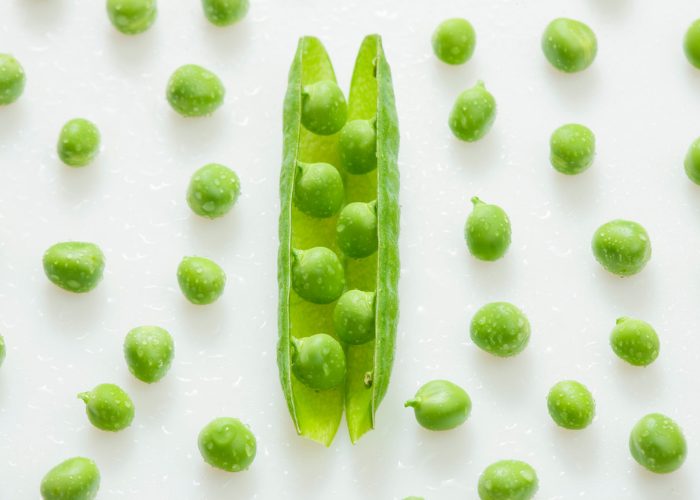
Food sensitivity to legumes is very common because it is a very broad group of foods. Legumes include beans, peanuts, and soy. In general, legumes contain small fibers that are important for healthy gut bacteria. However, those fibers may be poorly absorbed by the small intestine. This results in gas, or it may worsen symptoms of irritable bowel syndrome.[38]
Legumes are the food group with the most associated food sensitivities.[39] If you have a known food sensitivity to one or more legume, it makes sense to avoid all legumes. However, that may not always be the case. You should consult your doctor to determine if you should eliminate all legumes from your diet or only those that are causing you pain or sickness.
Signs and symptoms
- Hives or an itchy skin rash
- Nausea, stomach cramps, indigestion
- Vomiting or diarrhea
- Stuffy or runny nose
- Headaches
- Asthma
Common foods you should avoid
- Adzuki beans
- Black beans
- Soybeans
- Chickpeas
- Kidney beans
- Green beans
- Peanuts
- Lentils
- Black-eyed peas
- Green peas
Tips for managing intolerance to legumes
- Substitute with nuts and seeds. A diet with no legumes is very difficult to follow, especially for vegans with food sensitivities. However, in most cases, legumes can be substituted for nuts and seeds. This will ensure that you continue to get the most fiber, protein, and nutrients in a similar format.
- Find out which legumes you are allergic to. You might not have a food sensitivity to all legumes, just a few. So, visit your doctor and discuss your options of continuing to consume certain legumes while avoiding those that impact your food sensitivity.
- Do your research. This food group is often used in processed foods in unexpected ways and under different names. For example, soy can be made into a starch, a gum, a thickener or a flavor enhancer.[40] Thus, once you are certain that you have a food sensitivity to one or more legumes, research the names and formats that the legumes may appear in different foods.
9) Citrus
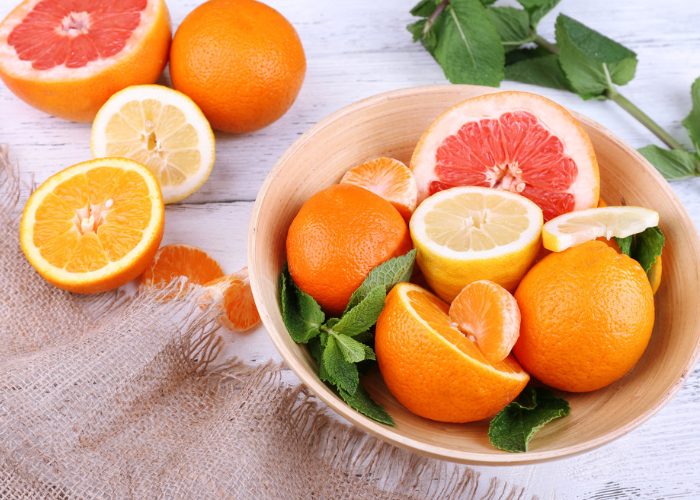
People who suffer from a citrus intolerance are sensitive to citric acid. This is because they lack the enzyme or chemical necessary to digest citric acid.[41] As such, citric acid is present in many more foods than just citrus fruits. It can also be found in pineapples, berries, as well as tomatoes (and ketchup). Citric acid is also a very common food additive and can be found in many processed or packaged food as a preservative.[42]
Signs and symptoms
- Cold sores or other sores in the mouth
- Headaches
- Abdominal issues (cramps or pain)
- Digestion problems[43]
- Acid reflux
- Heartburn symptoms
Common foods containing citrus you should avoid
- Citrus fruits
- Melon
- Cherries
- Tomatoes
- Ketchup
- Yogurt
- Canned tomatoes
- Cookies
- Jell-O
- Jams
- Mayonnaise
- Soup and stock bases
Tips for managing citrus intolerance
- Try eating foods with lower citric acid content. Whole foods such as apples, pears, carrots, fish, and lean meat are low in citric acid.
- Increase the intake of milk and dairy products. This can help mitigate the effects of citric acid on your system.
- Look for citric acid in packaged/processed foods. Citric acid is also a very common food additive and can be found in most any processed or packaged food as a preservative.[44] Make sure to check the labels of the packaged foods you buy.
10) Histamines (fermented foods)
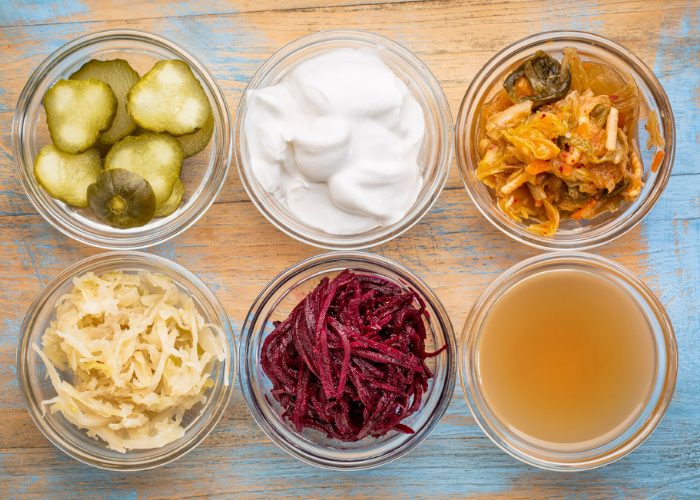
Approximately 1% of the U.S. population has a histamine intolerance.[45] The primary foods that contain histamine are fermented foods like pickles, yogurt, and kimchi, but it can also be found in fresh foods such as spinach. A sensitivity to histamine occurs when you have too much histamine in your system and your body is unable to break it down. It is not a reaction to the immediate presence of histamine in your body.[46]
So, what causes your histamine levels to get too high? Well, the most common cause is a DAO deficiency.[47] DAO, or diamine oxidase, is a digestive enzyme that helps break down histamine. When you have a deficiency in this enzyme, your body starts to accumulate histamines, which can then trigger symptoms.
Signs and symptoms
- Migraines, headaches
- Fatigue
- Painful menstrual cramps
- Blood pressure fluctuations
- Insomnia
- Nasal congestion
- Abdominal discomfort
- Diarrhea
- Nausea[48]
Histamine-rich foods you should avoid
- Aged cheese
- Chocolates
- Smoked meat products
- Shellfish
- Nuts
- Ready meals[49]
Tips for managing intolerance to histamines
- Avoid DAO-blocking foods and histamine-rich foods. By limiting your intake of these foods, you can keep your histamine levels at an equilibrium.
- Take probiotics. Probiotics can degrade histamines, in particular, the Bifidobacterium strain. It can suppress histamine release, lower histamine levels, and decrease allergy-like symptoms.
- Try D-hist supplements. This supplement that can block histamine release while fighting histamine symptoms.
- DAO enzymes supplements. These boost your body’s natural ability to produce DAO, which is the natural way to break down and process histamines internally.
4 Food Intolerance Tests You Should Know About

Blood tests and skin prick tests are commonly used to determine food allergies. However, in cases of food sensitivity, they don’t work. Instead, your healthcare professional should offer you a series of tests to determine if you have a food intolerance or food allergy.
Elimination challenge
Firstly, there is the elimination challenge. It is the most reliable method of checking for specific food sensitivities. This challenge requires you to eliminate the specific food from your diet for 3-4 weeks, then to re-introduce it back into your diet very slowly. Upon reintroduction, your doctor should monitor you very closely for 1-3 days for symptoms of intolerance.
Food challenge
Secondly, there is the food challenge. This food intolerance test is where you eat the specific food that is being monitored, and then survey the results over the next few days. Your doctor should give you a standard idea of the symptoms to look for and how to take note of them for the duration of the “challenge”.
Saliva or breath test
Thirdly, your doctor may also perform a saliva or breath test. These two tests show how your gut flora is responding to the food. They also help determine your body’s ability to digest certain foods.
ALCAT Test
Lastly, there is the ALCAT test. This test gauges a person’s delayed immune reaction to specific foods.[50] However, because the Alcat test is not paid for by Medicaid or Medicare, nor by most private insurance companies, a person who wants to get this test done must pay for it themselves. The cost is between $499 for a 150-food panel test, and $1199 for a platinum comprehensive test that includes 359 foods and substances.
Wondering If You Have One? Find Out Here

Because a food intolerance lasts for just a few days at a time, you may not be questioning your nausea or your headaches. But with the increasing prevalence of food allergies and food sensitivities, these issues can be very serious.
Here are some questions you can ask yourself to determine if you have a food sensitivity:
- Do you feel abdominal pain within 2 hours after eating any of the foods on this list?
- Do you feel nauseous after eating?
- Have you ever had a severe headache or a migraine after eating or drinking a specific thing?
- Have you ever suffered diarrhea after eating one certain food?
- Do you experience heartburn or acid reflux after eating specific foods or beverages?
- Have you noticed that you feel sick only if you combine certain foods or drinks together?
- Do you suffer from irritable bowel syndrome, but notice it really flares up after eating certain foods?
- Do you have frequent headaches accompanied by nasal congestion?
If you answered yes to any of these questions, you may have a food intolerance. Start taking note of the foods you consume that trigger your symptoms. Again, be sure to set an appointment with your healthcare professional to discuss further steps to manage your condition.
How to Start Managing Your Food Sensitivity the Right Way
If you feel poorly and want to pinpoint whether you have a food sensitivity, follow these action steps:
- Keep a food diary. For the next 30 days, write down everything you eat, including the time and the quantity. Also, make a note of any symptoms that occur or that you feel every day.
- Consult with your healthcare professional. Ask to take food allergy tests. This will ensure you are not suffering from something more serious, like a food allergy.
- Ask to do a breath or saliva test. These tests require you to eat specific foods that you may be sensitive to. It will help you determine if your body is digesting them, or if you lack the enzyme to do so.
- Try the food challenge. Ask your doctor to monitor what happens when you eat specific foods over the following 1-3 days. This will help to determine if these specific foods are causing you to feel unwell and sick.
- Ask to do the elimination challenge. Ask your doctor for help with eliminating certain foods from your diet altogether. It may be hard to start, but you can begin by eliminating just one food at a time for 3-4 weeks. When you reintroduce that food, ask your doctor for help noting your body’s reaction.

Conclusion
After all, our relationship with food should be enjoyable. When it starts to make us feel sick, we should quickly take steps to heal ourselves. Addressing food sensitivity issues head-on can begin that process.
References
- [1] https://cellsciencesystems.com/education/research/inflammatory-symptoms-immune-system-and-food-intolerance-one-cause-many-symptoms/
- [2] http://www.foodauthority.nsw.gov.au/foodsafetyandyou/life-events-and-food/allergy-and-intolerance
- [3] https://cellsciencesystems.com/education/research/inflammatory-symptoms-immune-system-and-food-intolerance-one-cause-many-symptoms/
- [4] https://www.mayoclinic.org/diseases-conditions/food-allergy/symptoms-causes/syc-20355095
- [5] http://www.foodauthority.nsw.gov.au/foodsafetyandyou/life-events-and-food/allergy-and-intolerance
- [6] https://www.pcrm.org/good-nutrition/nutrition-information/health-concerns-about-dairy
- [7] https://www.pcrm.org/good-nutrition/nutrition-information/health-concerns-about-dairy
- [8] https://www.mayoclinic.org/diseases-conditions/lactose-intolerance/symptoms-causes/syc-20374232
- [9] https://www.mayoclinic.org/diseases-conditions/lactose-intolerance/diagnosis-treatment/drc-20374238
- [10] https://bmcmedicine.biomedcentral.com/articles/10.1186/1741-7015-9-23
- [11] https://www.khanacademy.org/test-prep/mcat/organ-systems/the-immune-system/a/innate-immunity
- [12] https://www.beyondceliac.org/celiac-disease/non-celiac-gluten-sensitivity/symptoms/
- [13] https://gluten.org/faqs/
- [14] https://www.medicalnewstoday.com/articles/321883.php
- [15] https://integrisok.com/resources/on-your-health/2018/january/nightshades-and-your-gut
- [16] https://www.ncbi.nlm.nih.gov/pubmed/20198430
- [17] https://www.ncbi.nlm.nih.gov/pmc/articles/PMC4359818/
- [18] https://www.ncbi.nlm.nih.gov/pubmed/12479649
- [19] https://integrisok.com/resources/on-your-health/2018/january/nightshades-and-your-gut
- [20] https://www.foodintol.com/fructose-intolerance/sugar-sensitivity
- [21] https://www.health.harvard.edu/allergies/food-allergies-and-food-intolerances
- [22] https://www.ncbi.nlm.nih.gov/pubmed/29727694
- [23] https://www.uen.org/lessonplan/view/1264
- [24] NCBI. https://www.ncbi.nlm.nih.gov/pubmed/11991625
- [25] https://www.mayoclinic.org/diseases-conditions/egg-allergy/symptoms-causes/syc-20372115
- [26] https://www.mayoclinic.org/diseases-conditions/egg-allergy/symptoms-causes/syc-20372115
- [27] https://www.mayoclinic.org/diseases-conditions/egg-allergy/symptoms-causes/syc-20372115
- [28] https://www.allergytestaustralia.com/egg-intolerance/
- [29] https://www.mayoclinic.org/diseases-conditions/egg-allergy/symptoms-causes/syc-20372115
- [30] https://www.mayoclinic.org/diseases-conditions/egg-allergy/symptoms-causes/syc-20372115
- [31] https://www.mayoclinic.org/diseases-conditions/egg-allergy/diagnosis-treatment/drc-20372119
- [32] https://www.mayoclinic.org/diseases-conditions/egg-allergy/diagnosis-treatment/drc-20372119
- [33] https://www.pccmarkets.com/sound-consumer/2011-08/grains_beyond_wheat/
- [34] https://www.nyallergy.com/rice-allergy
- [35] https://www.nyallergy.com/rice-allergy
- [36] http://www.asthmaandallergycenter.com/article/corn-sensitivity/
- [37] https://acaai.org/allergies/types/food-allergies/types-food-allergy/corn-allergy
- [38] https://www.glnc.org.au/legumes-2/allergies-and-intolerances-to-legumes/
- [39] https://navs-online.org/articles/food-sensitivities-whats-a-vegan-supposed-to-do/
- [40] https://navs-online.org/articles/food-sensitivities-whats-a-vegan-supposed-to-do/
- [41] https://www.ncbi.nlm.nih.gov/pmc/articles/PMC6097542/
- [42] https://www.ncbi.nlm.nih.gov/pmc/articles/PMC6097542/
- [43] https://www.ncbi.nlm.nih.gov/pmc/articles/PMC6097542/
- [44] https://www.ncbi.nlm.nih.gov/pmc/articles/PMC6097542/
- [45] https://academic.oup.com/ajcn/article/85/5/1185/4633007
- [46] https://academic.oup.com/ajcn/article/85/5/1185/4633007
- [47] https://jevohealth.com/cgi/viewcontent.cgi?referer=https://www.google.com.ph/&httpsredir=1&article=1054&context=journal
- [48] https://academic.oup.com/ajcn/article/85/5/1185/4633007
- [49] https://www.histamineintolerance.org.uk/about/the-food-diary/the-food-list/
- [50] https://www.accesalabs.com/ALCAT-Test


